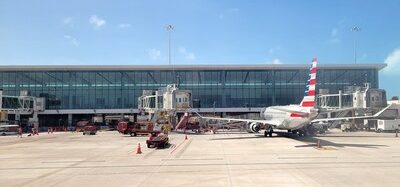TSA to test drone detection capabilities at Los Angeles International Airport
- Like
- Digg
- Del
- Tumblr
- VKontakte
- Buffer
- Love This
- Odnoklassniki
- Meneame
- Blogger
- Amazon
- Yahoo Mail
- Gmail
- AOL
- Newsvine
- HackerNews
- Evernote
- MySpace
- Mail.ru
- Viadeo
- Line
- Comments
- Yummly
- SMS
- Viber
- Telegram
- Subscribe
- Skype
- Facebook Messenger
- Kakao
- LiveJournal
- Yammer
- Edgar
- Fintel
- Mix
- Instapaper
- Copy Link
Posted: 27 May 2021 | International Airport Review | No comments yet
Unmanned Aircraft Systems can pose a threat to transportation security when flown too close to certain aviation, surface, or related transportation venues and many operators do not follow safety restrictions.


The Transportation Security Administration (TSA) has selected Los Angeles International Airport (LAX) to test state-of-the-art technology to detect, track, and identify (DTI) drones that are encroaching on restricted airspace. Drones, also known as Unmanned Aircraft Systems (UAS), can pose a threat to transportation security when flown too close to certain aviation, surface, or related transportation venues.
Small UAS are used for a wide range of commercial and recreational purposes. While many are equipped with Global Positioning System software that prevents their use in restricted locations, there are many operators who do not follow safety restrictions and consequently pose a security and safety risk to individuals, infrastructure and airplanes.
TSA selected LAX as an UAS DTI test bed due to its diverse aviation operations, large number of enplanements, frequency of UAS activity, and high passenger volume. This project will utilise a range of security and surveillance technologies including radar, thermal imaging, and artificial intelligence.
“The selection of LAX as a strategic location to test UAS detection technologies underscores the close working and strategic relationship between TSA and Los Angeles World Airports,” said TSA Federal Security Director for LAX, Boyd K. Jeffries. “We are confident that data and information collected here will ultimately benefit and help secure the entire transportation network from the threats that UAS in unauthorised areas present.”
“The UAS threat to airports has increased exponentially over the last several years. That is why it is vital we assess the effectiveness of UAS DTI technologies in live airport environments,” said TSA UAS Capability Manager, Jim Bamberger. “We are thrilled to partner with LAX on such a mission critical project that will pave the way for future technology assessments and help protect airports nationwide against UAS threats.”
In support of the Department of Homeland Security’s (DHS) role in UAS security, TSA is collaborating with airport, local law enforcement and inter-agency partners including the DHS Science & Technology Directorate. Together they will test the effectiveness of certain DTI technologies against threats to aviation, surface, and related transportation domains. The technologies will be evaluated in laboratory and operational field environments.
“A world-class airport is defined by more than a smooth travel experience and historic investments in our runways and terminals; it’s about a world-class commitment to safety and innovation,” said Los Angeles Mayor, Eric Garcetti. “LAX is an entry point for visitors, a crossroads for commerce, and an economic driver for our region – and its selection as a TSA testing ground for UAS detection is a tribute to our daily work to build a secure, dynamic, welcoming airport for passengers, employees, and anyone arriving in our city.”
“LAX’s long history of leadership and innovation wouldn’t be possible without the continuing strong partnership of the TSA, which has long stood with Los Angeles World Airports as we explore and implement technologies that make travel safer and more secure,” said Sean Burton, President, Los Angeles Board of Airport Commissioners. “As a test site for UAS detection technology, LAX will continue to work hand-in-hand with the TSA and local law enforcement as we collaboratively address concerns associated with unauthorised UAS in protected airspace.”
“We have seen UAS incursions at airports around the world cause physical and economic damage, and we need to be proactive in protecting our airport, our community and our regional economy against this threat,” said Justin Erbacci, Chief Executive Officer of LAWA.
Throughout the LAX test bed process, equipment will be tested and evaluated, and the data collected will be shared with the interagency and industry stakeholders for further evaluation and assessment. The information and data collected from the test will assist with finding effective solutions that mitigate the risks that unauthorised UAS operations pose to the nation’s transportation system.
Congress funded the DTI test bed at LAX. This is the second site where DTI technology will be tested. TSA announced last week that similar technology will be tested at Miami International Airport (MIA) beginning in early July. It is anticipated that work on the test bed at LAX will begin in late summer of 2021.
Related airports
Los Angeles International Airport (LAX), Miami International Airport (MIA)
Related organisations
Related regions
Related people
Boyd K. Jeffries, Eric Garcetti, Jim Bamberger, Justin Erbacci, Sean Burton

















